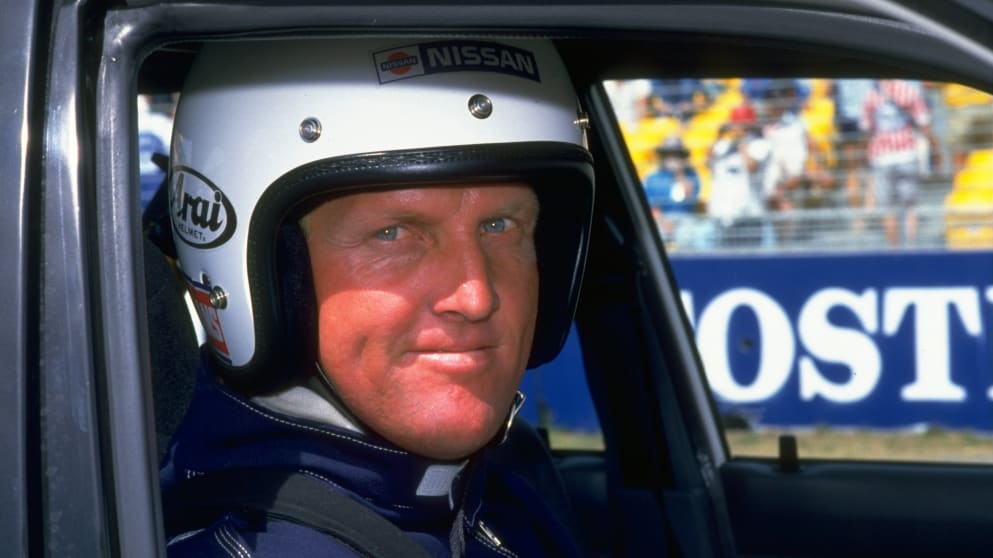The Italian Open is over 90 years old and has a vast history of winners, stories and moments. Ahead of the 2017 edition of the event, we've pulled together a collection of odds, ends, stats and trivia from its long and colourful history.

1. The tournament was originally just 36 holes
Launched in 1925, the Italian Open began its long life as a 36-hole event for the first nine years, not becoming a full 72-hole tournament until the 1935 edition at Golf Sanremo.
2. A father and son are on the roll of honour
Percy Alliss became the tournament’s third winner back in 1927, and added a second title in 1935. He was followed into the winners’ enclosure in 1958 by his son, Peter, making them the only father and son combination to have lifted the trophy.

3. Back-to-back wins (nine years apart?)
Belgium’s Flory van Donck remains the joint most successful name in the history of the Italian Open alongside Frenchman Auguste Boyer, having each won the event four times. Both men also share the honour as the only back-to-back winners in tournament history, however Donck’s consecutive wins have the unusual distinction of falling nine years apart. How? After winning his first in 1938, the intervention of the Second World War meant the Italian Open wasn’t played again until 1947, when Donck duly returned to take the title once again. In addition to his four wins, Boyer, meanwhile, also finished runner-up a further four times!
4. Seve’s uncle won it
After the 1960 edition, the tournament was suspended until 1971, when it moved to Garlenda Golf, where the winner was Ramon Sota – uncle of the late, great Severiano Ballesteros. Despite winning a record 50 times on the European Tour, the Italian Open was one tournament that remained out of reach in Seve’s glittering career, however, with his closest call being a play-off defeat to Bernhard Langer at Ugolino in 1983.

5. It’s part of European Tour history
The Italian Open is one of only six tournaments to have been played every year since the European Tour’s first year in 1972. The events are: The Open Championship, HNA Open de France, KLM Open, Omega European Masters, PGA Championship and Italian Open.
6. Billy Casper won it aged 44
American legend Billy Casper won 51 times across a trophy-laden 20 years on the US PGA Tour, including three Major titles, and picked up just one European Tour title in the twilight of his career – the 1975 Italian Open at Monticello. At the ripe age of 44, Casper remains the oldest winner in tournament history.

7. Eight Major Champions have won it
The Italian Open has a rich tradition of Major Champions who have added their name to the trophy since 1925. They are: Sir Henry Cotton (1936), Peter Thomson (1959), Tony Jacklin (1973), Billy Casper (1975), Bernhard Langer (1983, 97), Sandy Lyle (1984, 92), Greg Norman (1988) and Graeme McDowell (2004).
8. Buy a Ferrari, win a tournament
In the storied history of golf, it has long been a common question for the press to quiz a tournament victor on what they plan to spend their winnings on, however, how often have we heard of a player spending the first place cheque before they’ve even lifted the trophy? However, that’s exactly what Greg Norman did 29 years ago. In 1988 in Monticello, ‘The Shark’ added his name to the rollcall of champions. Between rounds Norman found time to travel to Maranello to buy a Ferrari, returning to the course to claim victory over Craig Parry with a rousing finish.

9. Colsaerts went birdie mad here in 2015
During the first round of the 2015 edition of the Italian Open, Belgium’s Nicolas Colsaerts made eight birdies in succession, at that point tying for the most successive birdies in a single round in European Tour history. Since then, Bernd Wiesberger did make nine birdies in a row at the 2017 Maybank Championship in Malaysia – albeit on preferred lies.
10. Molinari tied a long-standing record in 2016
Last year, Francesco Molinari not only won his national Open for a second time, he also equalled the tournament’s all-time scoring record with his winning total of 262, set by the aforementioned Percy Alliss way back in 1935. That’s 81 years earlier…







